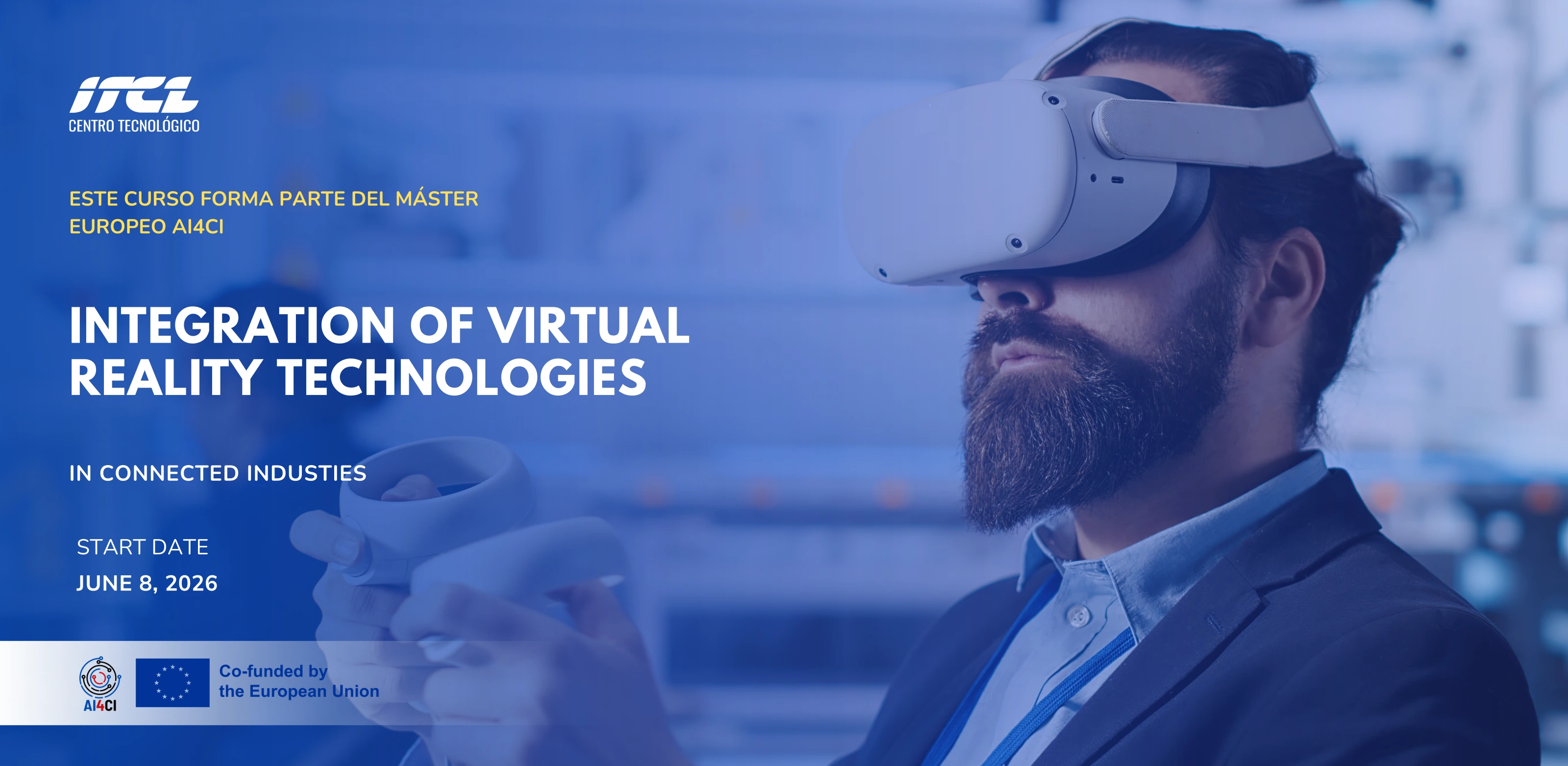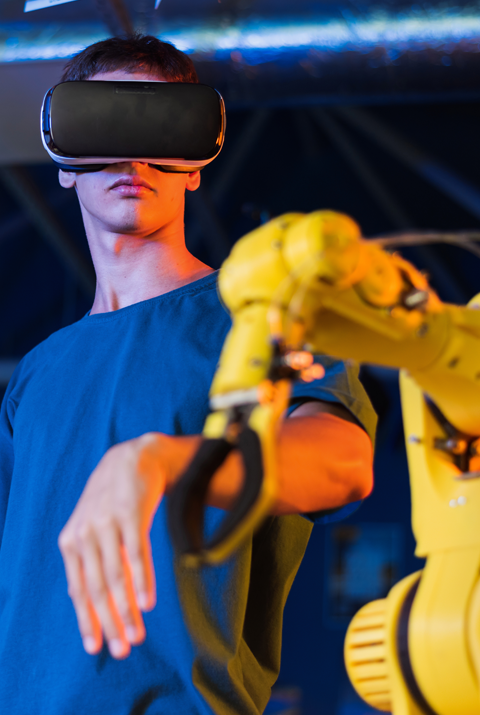INTEGRATION OF VIRTUAL AND AUGMENTED REALITY TECHNOLOGIES IN CONNECTED INDUSTRIES

INTEGRATION OF VIRTUAL AND AUGMENTED REALITY TECHNOLOGIES IN CONNECTED INDUSTRIES
COURSE DATES
08-12 June 2026
TEACHING VOLUME
Lessons: 20 hours
Supervised lab: 15 hours
MODALITIES:
Online and presential
WHAT YO'LL LEARN
The “Integration of Virtual and Augmented Reality Technologies in Connected Industries” course offers a comprehensive exploration of the transformative potential of immersive technologies in various industrial sectors. Participants will gain foundational knowledge of Virtual Reality (VR) and Augmented Reality (AR) and examine real-world applications across manufacturing, logistics, and healthcare. The course emphasizes the integration of digital twins and immersive Human-Machine Interfaces (HMIs), equipping students with the skills to design user-friendly interfaces and address challenges in implementing these technologies. With a balanced evaluation approach comprising quizzes and a project, this course is ideal for individuals with a basic understanding of VR/AR and programming fundamentals, aiming to
enhance their expertise in connected industries.
PREREQUISITES
-
Basic Knowledge of Virtual and Augmented Reality: A basic knowledge of the principles and concepts behind virtual and augmented reality may be required.
-
Programming Fundamentals: Since technology integration often involves software development, programming skills in relevant languages such as C# or C++, as well as understanding the concepts behind object-oriented programming, may be required.
-
Knowledge of Connectivity Technologies: It may be beneficial to have knowledge of communication technologies like Web Sockets or MQTT, commonly used to connect to IoT devices and digital twins.
PEDAGOGICAL OBJECTIVES
The goal of the course is to present novel hardware solutions for virtual, augmented and mixed reality, and showcase different applications of immersive technologies in industrial environments. In particular, the course will show how digital twins intertwine with immersive technologies, explaining the advantages of immersive Human-Machine-Interfaces (HMIs) over traditional HMIs, and helping to identify situations where to apply immersive technologies to improve use cases in the industrial plant. The course will also present virtual simulators for education and training.
DESCRIPTION
Introduction to Virtual and Augmented Reality Technologies. Understanding the fundamentals of Virtual Reality (VR), Augmented Reality (AR) and Mixed Reality (XR). Hardware alternatives and their advantages and disadvantages.
Applications of VR and AR in Connected Industries. Exploring use cases in manufacturing, logistics, healthcare, and other industries. Case studies of successful VR and AR implementations in connected industries.
Identifying potential challenges and solutions in real-world applications. Technical Foundations of VR and AR. Programming for VR and AR development: Unity, Unreal Engine.
Usability considerations in connected industries. Different types of interactions in VR and AR: Controllers, hand-tracking, and voice commands. Design principles for creating immersive and user-friendly interfaces with the particulars of VR and AR. Hands-on exercises in designing interfaces for specific industrial applications.
Integration of VR and AR applications with IoT devices and sensors in connected industries. Communication protocols between VR and AR applications and simulation servers or IoT devices: API Rest, Web Sockets, MQTT, OPC UA.
Fundamentals of digital twins and their levels. Integration and simulation of digital twins inside VR and AR visualizations. Alternating between digital twin simulation and real data feeds inside the same virtual experience.
EVALUATION MODALITIES
A project assignment to perform after the course.
REQUIRED TEACHING MATERIAL
The required material in terms of hardware and software will be provided during the course

